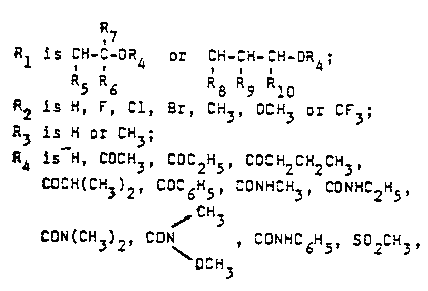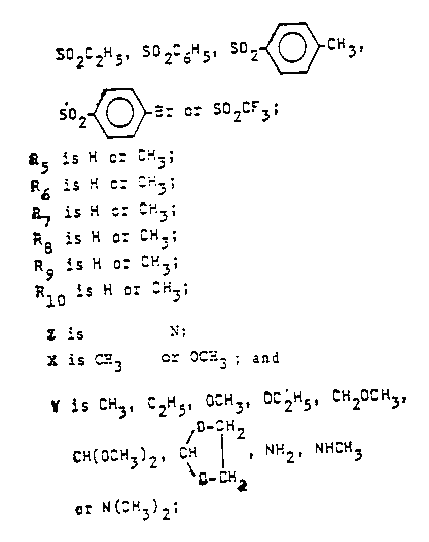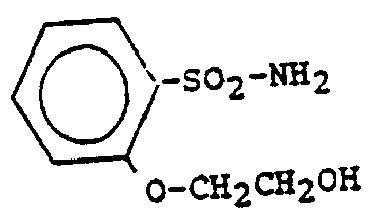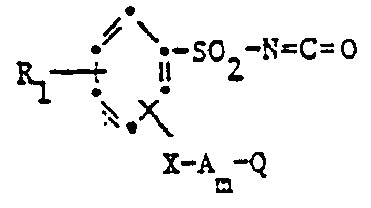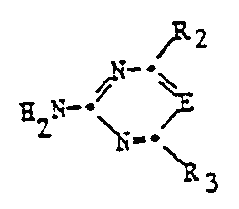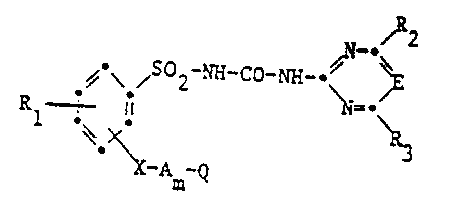Board of Patent Appeals and Interferences
Patent and Trademark Office (P.T.O.)
*1 FREERKSEN
v.
GASS ET AL.
Interference No. 101,810
September 5, 1990
Final Hearing July 11, 1990
Herbicidal Ortho-(Alkoxy)-Benzenesulfonamides
Patent granted to Robert W. Freerksen on March 19, 1985, Patent No. 4,500,344 filed March 21, 1983, Serial No. 474,873.
Application of Karl Gass, Werner Fory, Willy Meyer and Werner Topfl filed September 20, 1985, Serial No. 778,610. Accorded benefit of U.S. Serial No. 458,799 filed January 18, 1983, Patent No. 4,618,363 issued October 21, 1986.
Gerald E. Deitch, Roger A. Hines and Hoge T. Sutherland for Freerksen et al.
Karl F Jorda, Harry Falber, Edward McRoberts, Michael W. Glynn, Luther A.R. Hall, Irving N. Felt, Norbert Gruenfeld, Irving M. Fishman, and Kevin T. Mansfield, representing Gass
Before R. Smith, Sofocleous and Metz
Examiners-in-Chief
Sofocleous
Examiner-in-Chief
This interference involves a patent of Freerksen, which is assigned to E.I. du Pont de Nemours & Co., and an application of Gass et al. (Gass), which is assigned to Ciba-Giegy A.G. of Basle, Switzerland.
The subject matter at issue relates to benzenesulfonamide compounds which are useful as pre-emergent or post-emergent herbicides. The sole count at issue reads as follows:
Count 1
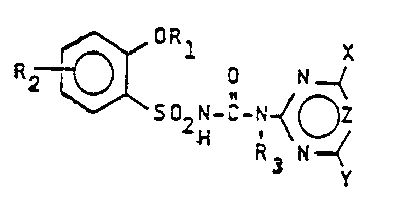
wherein
1) when R@6 and R@7 are both CH@3, then R@4 is H; and
2) when either R@8, R@9 or R@10 is CH@3, then the others must be H;
and their agriculturally suitable salts.
The claims of the parties which correspond to the count are:
Freerksen: Claims 1 to 24.
Gass: Claims 1 to 3, 6 to 8, 10 to 13, 20, 21 and 28 to 30.
In the Decision on Motions (Paper No. 14), the Examiner-in-Chief (EIC) denied Gass' preliminary motion (Paper No. 8) for the benefit of Swiss Application No. 437/82-3, filed January 25, 1982. Thereafter, the EIC set Freerksen a testimony period in order to establish a date for invention earlier than his filing date. After the testimony had been taken, the parties stipulated that the Freerksen record establishes conception and actual reduction to practice of the invention defined by the count prior to the filing of Gass' parent U.S. application on January 18, 1983 but subsequent to the filing of Gass' Swiss application on January 25, 1982. The parties agree that the only issue to be decided at final hearing is whether Gass is entitled to the benefit of his Swiss priority application. If Gass is, then Gass will prevail. If Gass is not, then Freerksen will prevail.
Both parties filed briefs and the party Gass appeared, through counsel, at final hearing.
We have carefully reviewed the arguments in the parties' briefs and we find that we agree with the EIC that Gass is not entitled to the benefit of his Swiss priority application. We agree with the EIC that the Swiss application does not contain a written description within the meaning of 35 U.S.C. 112, first paragraph, for a species within the scope of the count.
*2 For a party to be accorded the benefit of a foreign application under 35 U.S.C. 119, the application must satisfy the requirements of 35 U.S.C. 112, first paragraph. Kawai v. Metlesics, 480 F.2d 880, 178 USPQ 158 (CCPA 1973). These requirements need only be met for an embodiment within the scope of the count in the special situation the count is drawn to a genus and the previously filed application discloses only a species thereof. Weil v. Fritz, 572 F.2d 856, 196 USPQ 600, note 16 (CCPA 1978).
Here, the Swiss priority application does not describe in ipsis verbis a species within the scope of count 1. This, however, is not necessary in order to comply with the description requirement of 35 USC 112, first paragraph, In re Lukach, 442 F.2d 967, 169 USPQ 796 (CCPA 1971); all that is required is that the application reasonably convey to persons skilled in the art that, as of the filing date thereof, the inventor had possession of the subject matter later claimed by him. In re Edwards, 558 F.2d 1349, 196 USPQ 465 (CCPA 1978); In re Driscoll, 562 F.2d 1245, 195 USPQ 434 (CCPA 1977).
I
It is Gass' position that the Swiss application reasonably conveys to those skilled in the art that Gass had possession, as of his filing date, of one of the following benzenesulfonamide compounds,
all of which fall within the scope of the count. Gass calls our attention to the fact that the Swiss application specifically discloses a class of intermediate compounds of Formula II [FN1]
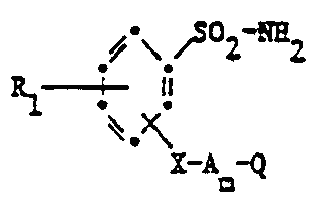
and discloses as a member of that class the following intermediate
This intermediate is compound 16 in the table on page 18 of Gass' translation of the Swiss priority application. The translation teaches at page 7 that compounds of Formula II can be converted to their corresponding isocyanates of Formula IV [FN2]
which are thereafter reacted with a 2-aminopyrimidine or a 2-aminotriazine of Formula V [FN3]
to produce the benzenesulfonamide compounds having Formula I [FN4]
Gass contends that one following this disclosure would recognize that intermediate compound 16 can be converted into its corresponding isocyanate and thereafter reacted with a 2-aminopyrimidine or a 2-aminotriazine of Formula V to produce compounds having the following formula:
Gass states that the Swiss application specifically discloses 17 final compounds having 2-aminotriazine moieties where E is N; R@2 is OCH@3 and R@3 is OCH@3, CH@3 or N(CH@3)@2, thus indicating to those skilled in the art a preference for those particular values for E, R@22 and R@3. See Gass' main brief, pages 31 to 33. It is Gass' position that reacting intermediate compound 16 with any of the aforesaid 2-aminotriazine moieties would result in the obtention of one of the three aforementioned benzenesulfonamide compounds which fall within the scope of the count.
II
*3 In our view, the Swiss application does not reasonably lead one of ordinary skill to any of the three aforementioned benzenesulfonamide compounds of the count, i.e., does not reasonably convey to those skilled in the art that Gass had possession of any of the three aforementioned benzenesulfonamide compounds of the count. Cf. Flynn v. Eardley, 479 F.2d 1393, 178 USPQ 288 (CCPA 1973); Fields v. Conover, 443 F.2d 1386, 170 USPQ 276 (CCPA 1971); Olson v. Julia, 209 USPQ 159 (Bd.Pat.Int.1979).
Gass urges in his main brief at page 5:
In determining what "reasonably leads one," Gass respectfully submits the controlling legal principle is not whether one "would select those particular substituents" from the Swiss application but rather, as recently stated by this Board in Heymes v. Takaya, [6 USPQ2d 1448 (BPAI 1988) ] supra, whether one would necessarily recognize that such a combination was disclosed as a construction which might be selected if desired:
The issue is not whether one following the Takaya disclosure would necessarily produce the compounds of claim 119; rather, it is whether he would necessarily recognize that such a combination was disclosed as a construction which might be selected if desired. [FN6]
We do not agree with Gass that the foregoing passage in Heymes v. Takaya, supra, represents the "controlling legal principle" for determining whether the Swiss application reasonably leads one of ordinary skill to a compound within the scope of the count. Rather, the test is, as noted in Heymes v. Takaya, 6 USPQ2d 1448 at 1452 (BPAI 1988),
[W]hether the ... specification conveys clearly to those skilled in the art that Takaya invented the compounds at issue.
The question of whether an application contains a sufficient written description within the meaning of 35 USC 112, first paragraph, for a compound or a composition which is not specifically disclosed but which is among those suggested by general language in the application must be decided on its own facts. In re Driscoll, supra. Prutton v. Fuller, 230 F.2d 459, 109 USPQ 59 (CCPA 1956).
In Heymes, a panel of the Board found that the Takaya disclosure, even though it did not describe in ipsis verbis a thiazolyl compound within the scope of the count, nevertheless provided adequate direction to those skilled in the art to such a thiazolyl compound, i.e.,
we agree with Takaya that one skilled in the art would nevertheless be directed to the compounds of claim 119 because Takaya teaches that R1 may be phenyl or thiazolyl, and one skilled in the art would recognize that the compounds with R1 as phenyl could also be prepared with R1 as thiazolyl. Further, one skilled in the art would be motivated to prepare the compounds with R1 as phenyl in view of the comparative tests set forth in the Takaya specification which indicate that in 5 out of 6 comparisons the thiazolyl compounds resulted in superior activity than the phenyl compounds. Heymes at 1453.
*4 As contrasted with Heymes, the Gass Swiss application does not provide any motivation such that one skilled in the art would select intermediate compound 16 as a starting material for the reaction with any of the aforesaid 2-aminotriazine moieties. In none of the examples set forth in the application is intermediate compound 16 used as a starting material to prepare any of the final compounds listed in examples 101 to 133. Nor does the Swiss application provide any blazemarks so as to guide those skilled in the art to select intermediate compound 16 as a starting material. In this regard, we note that compound 16 is but one of 52 intermediates within the scope of Formula II. One skilled in the art might fortuitously select intermediate compound 16 as the starting material, react it with an appropriate 2- aminotriazine moiety and obtain one of the three aforementioned benzenesulfonamide compounds within the scope of the count. Such a happenstance does not necessarily mean that the application conveys to those skilled in the art that Gass invented of those compounds or that the application constitutes a constructive reduction to practice of the invention of the count where as here the application provides no motivation or other guidance for the selection of intermediate compound 16 other than pure chance. In other words, the Swiss application does not contain a sufficient written description within the meaning of 35 USC 112, first paragraph, to support a claim to any of those compounds. Cf. Flynn v. Eardley, supra; In re Rushig, 379 F.2d 990, 154 USPQ 118 (CCPA 1967). As noted by the Rushig Court at 122,
Specific claims to single compounds require reasonably specific supporting disclosure and while we agree with the appellants, as the board did, that naming is not essential, something more than the disclosure of a class of 1000, or 100, or even 48, compounds is required. Surely, given time, a chemist could name (especially with the aid of a computer) all of the half million compounds within the scope of the broadest claim, which claim is supported by the broad disclosure. This does not constitute support for each compound individually when separately claimed.
For the foregoing reasons, we hold that Gass is not entitled to the benefit of Swiss Application No. 437/82-3, filed January 25, 1982.
JUDGMENT
It is hereby adjudged that on the present record,
Robert W. Freerksen is entitled to a patent containing claims 1 to 24; and
Karl Gass, Werner Fory, Willy Meyer and Werner Topfl are not entitled to a patent containing claims 1 to 3, 6 to 8, 10 to 13, 20, 21, 28, 29 and 30.
BOARD OF PATENT APPEALS AND INTERFERENCES
Ronald H. Smith
Examiner-in-Chief
Michael Sofocleous
Examiner-in-Chief
Andrew H. Metz
Examiner-in-Chief
FN1. We have not listed the definitions for the substituents R@1, X, A, Q or m.
FN2. We have not listed the definitions for the substituents R@1, X, A, Q or m.
FN3. We have not listed the definitions for the substituents R2, R3, or E.
FN4. We have not listed the definitions for the substituents R@1, X, A, Q m, E, R 2 or R@3.
FN6. Heymes v. Takaya, 6 USPQ2d, at 1452, citing Byrne v. Trifillis, 442 F.2d 1390, 170 USPQ 322 (CCPA 1971) ] main brief at page 5.
<< Return to Board of Patent Appeals and Interferences Index


